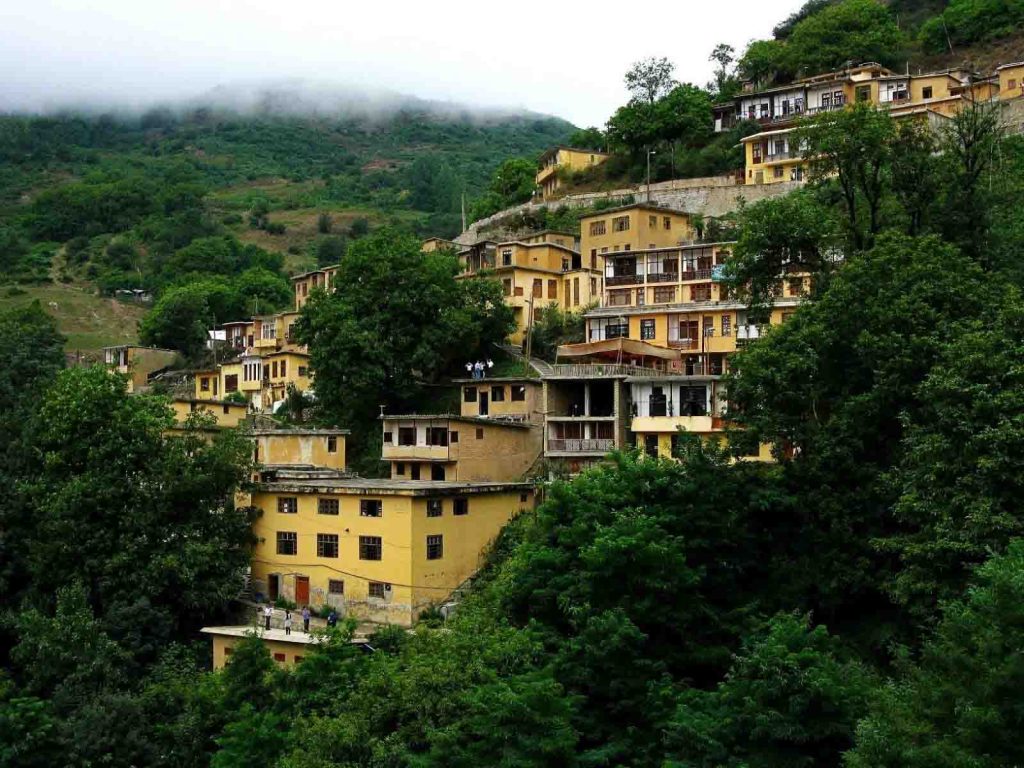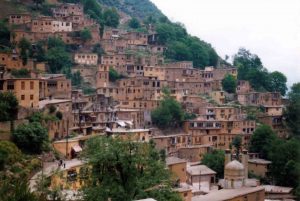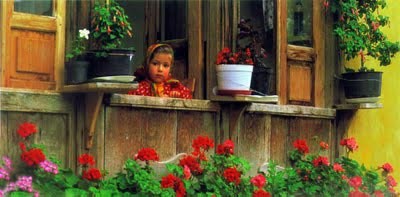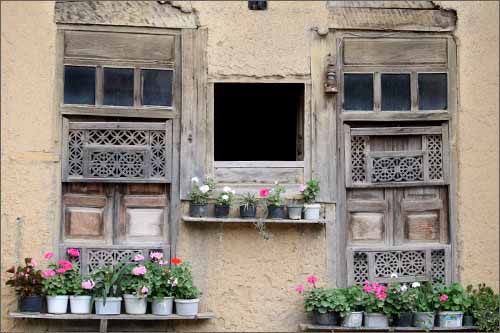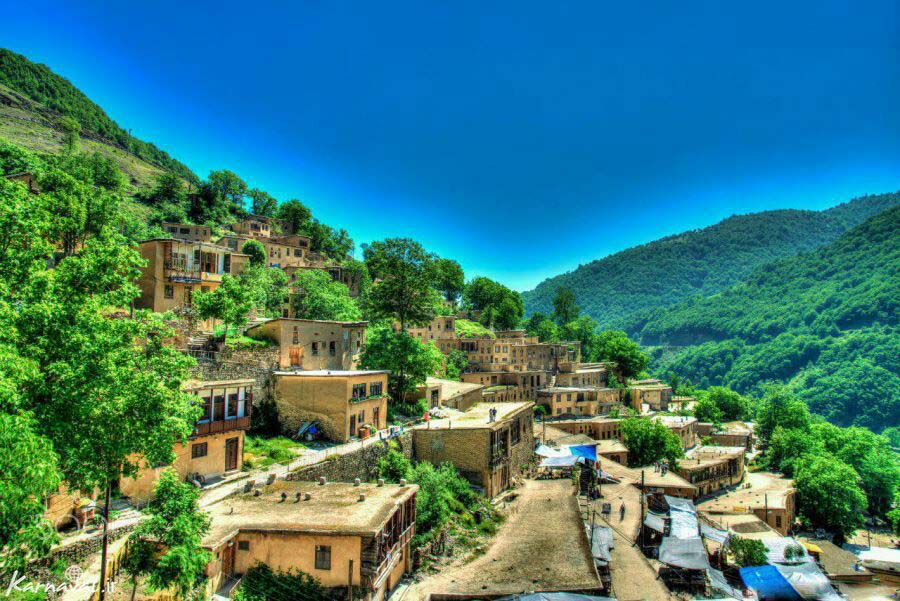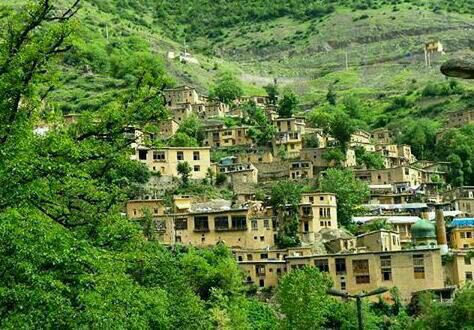Masuleh a unique city
Masuleh is a village located in the Sardar-e -Jangal District, in Fuman city, Gilan Province, Iran. It’s a small mountain village in Caspian Iran.
This village is about 60 km southwest of Rasht and 32 km west of Fuman. Masuleh is 1,050 meters above sea level in the Alborz mountain range, near the southern coast of the Khazar (Caspian) Sea. Masuleh itself has a difference in elevation of 100 meters.
There are some springs which are surrounded by dense forests from valley to mount. A river named Masouheh-Rood-Khan is passing through the city, and also there is a waterfall located just 200 meters away from Masuleh. It’s cut-off by snow during the winter. Fog is one of the most important weather features of Masuleh.
According to the location of Masuleh, the climate is different from the most part of Iran. Warm, moist air blowing from the Khazar sea is trapped by the Alborz Mountains, so creating heavy humidity and fog on this region. This area is known as the Caspian and Hyrcanian Mixed Forests.
Beautiful forests, meadows, and mountains can be seen from the village.
It is interesting that Masouleh was announced as UNESCO Historical Heritage Site in September 2015 and it is visited by thousands of tourists every year.
Masuleh has a wonderful nature and an attractive architecture with an antiquity of more than 1000 years. This amazing complex remained from history with customs and traditions, handicrafts and many natural and historical sightseeing is the host of thousands of excited guests and travelers every year. Unfortunately, Its population has declined over the years. The native people of Masuleh speak Talesh, same as the northern part of Gilan, and some other regions of Ardebil and the southern the Republic of Azerbaijan.
Houses, architecture, and nature
The important thing about Masuleh is that the roofs of houses on lower tiers are used as courtyards for houses on the tiers above them. Sometimes its streets are laid out along interconnected roofs.
Because of being located on Caspian strip and having also fertile soil it is covered with richness forests such as Pasturages, Tosca, Walnut, and Hazelnut.
Additionally, there are small rivers, waterfalls, and springs, that totally have created a wonderful and eye-catching natural landscape. There are also some mines such as iron, China root, Quartz, zinc, and Galena. In the time of Qajar, the existence of these mines caused to make cannons of Iranian artillery in this village.
Masuleh has one old barbershop, a good bakery and a bookshop that airs old songs for people.
Being Masuleh once the Silk Road of the Gilan region, people from far and near gathered there for business to sell and buy their products and handicrafts.
Masuleh architecture is fabulous. The houses have been built into the mountain and are interconnected with each other. Courtyards and roofs both used as pedestrian areas and streets.
This beautiful village does not permit any motor vehicles to enter, because of its unique and amazing layout.
The extraordinary architecture of Masuleh is known as “The yard of the above house is the roof of the below house”.
The exterior of most buildings in Masouleh is made of yellow clay, so it allows for better seeing in the fog.
Buildings are mostly 2 stories includes 1st floor and below floor made of bole, rods, and adobe.
A hall, small living room, big guest room, winter room, bathroom, and balcony are usually built in 1st floor, and a barn, a stable and cold closet are found on the floor below, that two floors are connected by several narrow steps inside the house.
The houses have special rooms for winter and summer. The winter room is called Sumehand it is at the far end of the house. and does not let in much light. And there is a fireplace in the middle of the room, that it is used to cook and keep warm.
The summer room has lattice windows made of colorful glasses and wood, which can be opened by pushing upward. The rooms usually have decorated with built-in shelves with copperware, tiny pantries, small windowpanes and mirror on the wall.
The materials for building the houses are mostly stones, mud-bricks, clay, and timber.
Local market
It is impossible for cars to drive in, so people leave the village pathways and rooftops indistinguishable.
There are four main local communities in the city named: Maza-var at the south, Khana-var at the East, Kasha-sar at the North, and Assa-mahala at the West.
There is the Market (Bazaar) area and also the main mosque, named O-ne-ben-ne Ali in downtown.
There are many products such as kilim, rugs which have been made of goat’s hair, Jajim a carpet made of wool or cotton, Chamush traditional shoe, clothes, knives and silk scarves at the bazaar.
The Bazaar of Masuleh is a hub of trade and business and has four independent floors at the market.
There are blacksmiths, bakeries, grocery store, knife-making shops and shops selling knitted dolls, colorful handmade socks and other popular handicrafts.
Different parts of Masuleh have small, traditional coffee shops and Teahouses that serve tourists with tea and a delicious local bread.
Tourists’ attraction
The village has a blend of Taleshi, Gilaki and Torki cultures.
People gather to perform their daily prayers in the biggest mosque in Masuleh named the Jameh Mosque.
The second most popular Mosque is the Saheb-az-Zaman, that was built in the 12th century AD.
Imamzadeh Aun ibn Ali is one of the main shrines in Masuleh and locals call it Qalandar Khaneh, means home of a wandering dervish.
This pretty shrine has an octagonal structure and its door has been made of ebony with impressive designs. The shrine is a 1,200-year-old designed with verses from the Holy Qur’an.
Masuleh has a blend of moderate mountainous weather and humid coastal climate, that attracts tourists.

